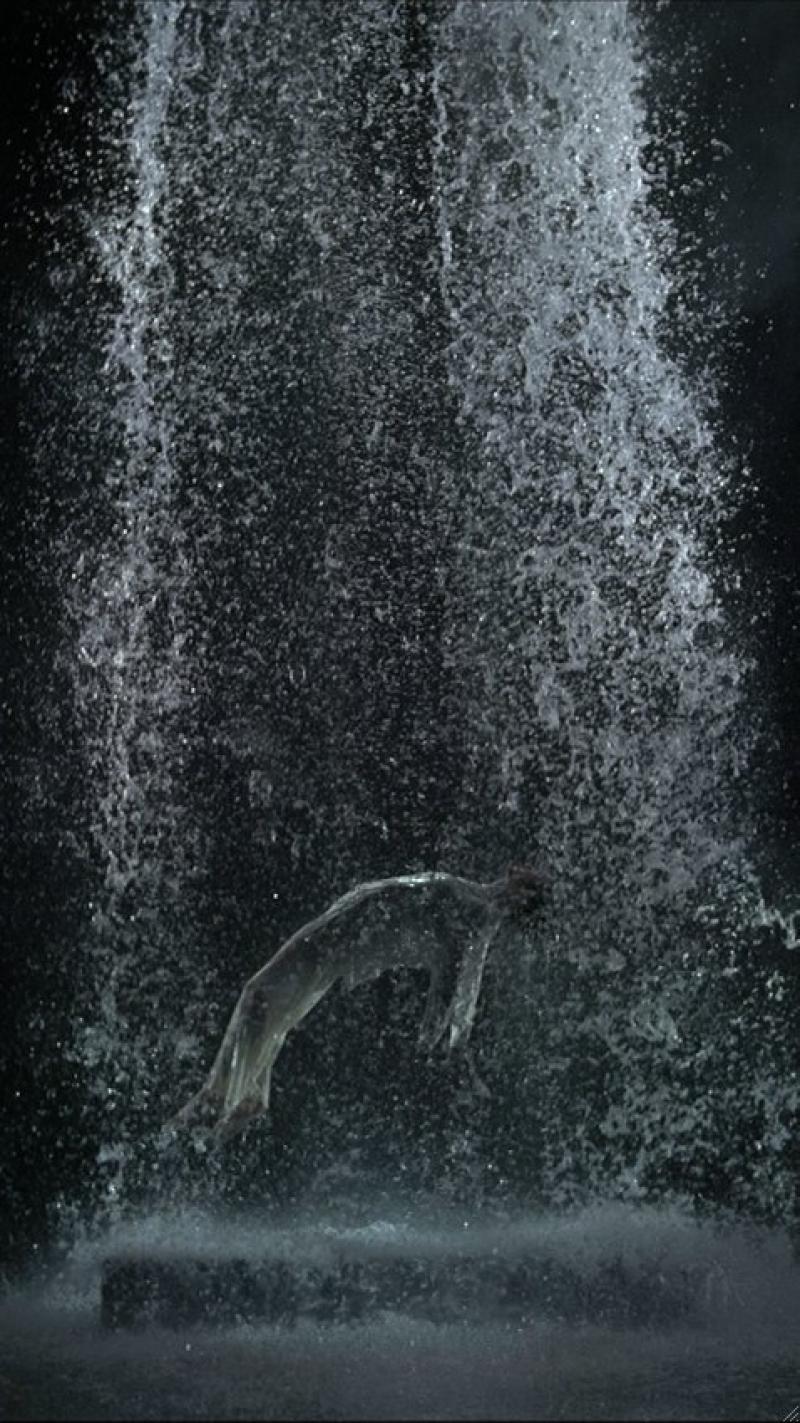Sellars and Viola's Tristan und Isolde, Royal Festival Hall | reviews, news & interviews
Sellars and Viola's Tristan und Isolde, Royal Festival Hall
Sellars and Viola's Tristan und Isolde, Royal Festival Hall
Salonen's conducting and Viola's videos elevate the philosophy of Tristan

People always overlook how much of a hippie Richard Wagner was intellectually. His philosophical stance differs little from that of Neil from The Young Ones. It's a side of Wagner you can't get away from in Tristan und Isolde, with its endless railing against temporal realities and its search for universal oneness - yeah man, oneness.
But if some of the video fell on the wrong side of the New Age line, and other parts of it fell a bit too chicly on the wrong side of the fashion-ad line, most of it, say 90 per cent, had a terrific aesthetic substance. Viola is a great film technician. So images of sea, woods, dawns, ships, couples are never just that. However close he comes to cliché, he just manages to tack away at the last minute. Images are bled, over-exposed, slowed down or pixilated. Like the ill-fated couple, there is never a comfortable middle way. Texture, colour, light, even the screen (which is flipped portrait-wise for the final act) are all carefully manipulated.
All of which surprised me. I've always been, at best, underwhelmed, at worst, angered by Viola's gallery work. And yet this potpourri accompanying Tristan - with plenty of fire and water, slow-motioning, close-ups and a few tears - is little more than a greatest-hits DVD of this gallery work. But somehow the lack in these images when viewed on their own vanishes when in conversation with Tristan. In fact, in the many magical images of the sea, of the deepest recesses of woods, of one of those mighty modern ships on a dark horizon, one often got to a more profound, more haunting truth than one would have ever got from just listening to the didactic teenage sentiments of the libretto, whose brazenly immoral death fixation still rather offends my sensibilities.
It certainly provided a perfect template for future multimedia collaborations. As did the ideas from Peter Sellars provide a perfect template for future semi-stagers, with its full utilisation of every last nook and cranny of the HMS Royal Festival Hall. I have never felt more like I was on a ship in a performance of Tristan. Joshua Ellicott's Sailor lets out his opening sighs high up from a box as if up a mast; the choir strikes up their stentorian voices from behind and above as if on deck. The surround sound creates a oneness of sorts. Esa-Pekka Salonen had to conduct in the round.
He did it well. The Philharmonia Orchestra never once let him down. It was a lustrous sound they produced together, one that wasn't just exciting but also delicate. There was restraint where necessary, so that the more intimate events shone. Both leads, Violeta Urmana's Isolde and Gary Lehman's Tristan, shone, too. Urmana is a classy act: still, concentrated, powerful, unwavering in quality and tone to the end. By Act Three, Lehman had run out of the quality puff that had been so evident at the start, and in his death throes adopted a comically gormless face. Matthew Best's King Marke was astoundingly fine, Anne Sofie von Otter's Brangäne less so, over-agitated in manner and mouth.
But this production (which was fully staged in Paris in 2005) sees video collaboration come of age. In dramatic conception and in co-ordination with the plot, two or three of Viola's ideas were quite literally breathtaking. The final levitation was perhaps the most extraordinary of the lot. There is a pretentiousness in Viola's images, for sure, and at times a nauseating obsession with New Age symbolism. But none of it is any worse than the pretentiousness of the libretto. And anything that deflects our attention from the pretentious immoralities of the libretto and elevates the situation to a plane in which you can relate to the characters and the basic concepts hidden amid the philisophical grand-standing is a good thing in my book.
- The Philharmonia Orchestra's season continues at the Royal Festival Hall on 30 September
- Find out more about video artist Bill Viola
- Wagner on theartsdesk
Add comment
The future of Arts Journalism
You can stop theartsdesk.com closing!
We urgently need financing to survive. Our fundraising drive has thus far raised £49,000 but we need to reach £100,000 or we will be forced to close. Please contribute here: https://gofund.me/c3f6033d
And if you can forward this information to anyone who might assist, we’d be grateful.

Subscribe to theartsdesk.com
Thank you for continuing to read our work on theartsdesk.com. For unlimited access to every article in its entirety, including our archive of more than 15,000 pieces, we're asking for £5 per month or £40 per year. We feel it's a very good deal, and hope you do too.
To take a subscription now simply click here.
And if you're looking for that extra gift for a friend or family member, why not treat them to a theartsdesk.com gift subscription?

Comments
...
...
...
...
...